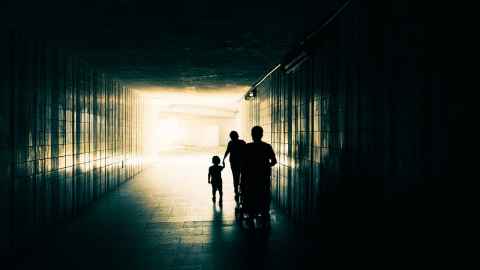100 years of sexual abuse of women: what's changed?
14 January 2021
A century of sexual abuse of women in New Zealand is analysed in a University of Auckland study.

The newly-published research looks back as far as 1922 by analysing interviews with thousands of women about their lifetime experiences.
The study indicates that one in six New Zealand women experience sexual violence from an intimate partner during their lifetime, a rate that has remained remarkably constant over the past century.
Rates of child sexual abuse and non-partner sexual assault seem to have declined slightly but remain alarmingly high at 1 in 5 for child sexual abuse and 1 in 14 for non-partner sexual assault, according to Associate Professor Janet Fanslow, of the School of Population Health, who led the research.
Prevention efforts need to engage men and boys; international evidence shows that prevention strategies can work
“Men are the primary perpetrators of violence against women, and particularly of sexual abuse, so prevention efforts need to engage men and boys,” she said.
Internationally, there is evidence that properly funded and widely implemented prevention strategies can be effective, the authors of the paper wrote.
The research relied on results from a 2003 New Zealand Violence Against Women study of 2,855 women in Auckland and the Waikato and a 2019 New Zealand Family Violence Study that included 1464 women in Auckland, Northland and the Waikato. The women were asked questions about their experiences of sexual abuse.
The study grouped the women according to when they were born, with the earliest group born between 1922 and 1937 and the most recent group born between 1991 and 2001.
The researchers developed a timeline that included events, policies, social changes and social movements to try to determine any connections with the reported prevalence of sexual abuse, and also slotted developments in New Zealand into an international context.
The lowest reports of child sexual abuse came from the earliest (1922-37) and the most recent (1991-2001) groups.
The data highlight the importance of agencies supporting
women who have been sexually assaulted
Social and cultural changes such as the women’s movement, which lead to the establishment of the women’s refuge and rape crisis services, and the women’s self-defence movement, and policy changes such as the Domestic Violence Act and legislation criminalising rape in marriage, have made it more acceptable for women to leave violent partners, though significant challenges remain.
The data highlight the importance of agencies supporting women who have been sexually assaulted. Most importantly, the results emphasise the “need for prevention efforts involving men to be comprehensively implemented and enhanced,” Fanslow writes.
The rates of sexual abuse demand urgent attention, she and her co-authors say.
The article entitled ‘A century of sexual abuse victimisation: a birth-cohort analysis’ was published in the latest issue of Social Science and Medicine.
The study team included Dr Ladan Hashemi, and Dr Pauline Gulliver from the School of Population Health, and Professor Tracey McIntosh, from the School of Māori Studies and Pacific Studies. The study was funded by the Ministry of Business, Innovation and Employment.
Media contact
Paul Panckhurst | media adviser
M: 022 032 8475
E: paul.panckhurst@auckland.ac.nz